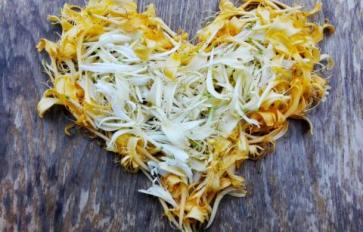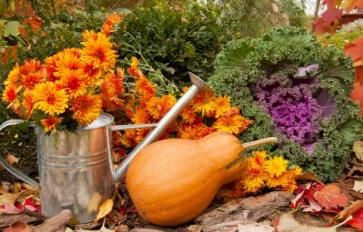
One of my favorite times to hang out in a garden is at night. There’s a magical element there that isn’t necessarily present during the day. The beauty is less in-your-face and more subtle and nuanced. For the night owls among you, consider building a moon garden!
What’s a moon garden?? It’s a way to feature plants that really pop at night. These may be plants with white flowers or silvery foliage that reflect the moonlight. Or plants that bloom and/or release their scent at night, attracting beautiful pollinators like the sphinx moth. Or plants with a symbolic relationship with the moon. Blue flowers are also a good addition; they seem to glow at twilight.
A moon garden can be a small corner of your yard or it can be a great big plot. Or it can be part of your balcony if you don’t have a yard. Whatever works…be creative!
Many plants would be great for a moon garden. Here are some really good ones…
Night Blooming Jasmine
These include Jasminum polyanthum, varieties of Jasminum officinale and one that’s technically not a Jasmine, Cesrum nocturnum.
This strong, heady and sweet scent of Night Blooming Jasmines are—you’ve got it—stronger at night when the lovely little white to green flowers open. These are climbing plants, a trellis of one of them right outside your doorway is a great way to scent your home. I used to have a Night Blooming Jasmine just outside my back door in San Francisco and it scented the whole flat, strongly.
If you live in USDA hardiness zones 8b-11, J. polyanthum and C. nocturnum will work for you. They do need a bit of chill in the winter to thrive but are frost tender. They can be grown in pots and brought inside during the winter, when they should have less light exposure anyway. Jasmine officinale actually needs a bit of freezing temperature in the winter to do well, and it may make it outside even in zone 6 in a protected spot. All three can be propagated from vegetative cuttings.
Night Blooming Jasmine is pollinated by moths, who are drawn to the white flowers glowing in the moonlight. Varities of these plants and other Jasmines have been used for ritual work in both Central America and Asia. Do note that these are not edible plants…they are toxic orally. Due to the very sweet scent of the flowers, children may be tempted to eat them. Not a good idea…
Datura
This is another incredibly sweet-smelling, night blooming plant. There are multiple datura species, all of which are highly toxic, so consider how much you want this one in your garden if you have small children or pets. The unpleasant smell of the leaves and bitter taste of the plant may be too off-putting for sampling, but I wouldn’t rely on this. Also, wash your hands after handling the plant.
That said, this is a sacred plant across multiple continents. Depending on the species, the flowers may be white, yellow, pink or bluish purple. They are both large and intensely fragrant, opening at night and pollinated by sphinx moths. The first time I saw one of these huge moths, I thought it was a hummingbird…a common mistake due to their size and way of flying. In the early morning before the flowers close up, real hummingbirds along with bees take over as pollinators (1).
Some datura species will reseed themselves and come back in the spring after dying back in the winter. Our datura from the southwestern US, known variously as Jimsonweed, Sacred Datura, Moon Flower, Angel’s Trumpet and Devil’s Trumpet, can grow so profusely as to be considered weedy (2).
Daturas are easy to start from seed. They can spread like crazy in your garden, depending on your climate, so consider keeping them in a pot. Datura will need to be repotted annually. The USDA lists datura species as hardy in zones 5-7 as an annual and in zones 8-10 as a perennial.
Jasmine Tobacco
Jasmine Tobacco (Nicotinia alata) is a fantastic inclusion in a moon garden with it s moon-reflecting white flowers that release their scent at night. The sweet, strong scent is reminiscent of Jasmine, hence the plant’s common name. It grows in USDA hardiness zones 6-9. It may overwinter as a perennial in warmer areas or behave as a frost-tender annual that comes back from seed in colder areas (3).
With its white, moon-reflecting flowers that release their heady sweet scent at night, this is a fantastic addition to your moon garden. It grows in USDA hardiness zones 6-9. In warmer areas it may overwinter, otherwise it will grow as a frost-tender annual that reseeds (possibly profusely). Note that this is a poisonous member of the nightshade family, so plant with caution if you have pets or small children. The narrow, white tube-shaped flowers will attract sphinx moths (really, you’ve gotta see these guys!). Jasmine Tobacco is easy to grow and can be started from seed indoors 6-8 weeks before the last frost.
Moonflower
Ipomoea alba is in the same family as morning glories…it has the same 5 pointed star-shaped flower, only it’s bright white and is quite large…perfect for reflecting moonlight while sharing its lovely scent in the evening. This is another climbing plant that does well in warm climates, though it can grow as an annual in colder areas and may even reseed itself. A flower will open in the afternoon and stay open all night until dawn, when it shrivels up. The same thing will happen day after day until all of the flower buds have bloomed. It’s a popular flower with nocturnal pollinators like moths and such.
There are many other plants to consider for their nocturnal scent, including Chocolate Flower (Berlandiera lyrata), Evening Primrose (Oenothera species), Honeysuckle (Lonicera) and others. But don’t just limit yourself to night blooms and scent. Get even more creative! Try some plants with silvery foliage that are great for highlighting the moonlight…Agave, for instance. This one, by the way, will attract bats as pollinators…how cool is that?
Artemesia Species
What moon garden would be complete without some plants in honor of Artemesia, goddess of the moon? A great and easy to grow addition is Mugwort (Artemesia vulgaris). I love the scent of this plant, though it’s definitely not sweet! Mugwort can be propagated by root cuttings or by seed following cold stratification. It likes a sunny location and regular watering and well-drained soil. Mugwort provides habitat for moths and butterflies. For mugwort, it’s not the flowers that stand out at night…it’s the beautiful silver-green foliage. That plus the fact that the leaves stuffed into a dream pillow will make dreams more vivid. An all around great nighttime plant. (Maybe skip the dream pillow if pregnant…the volatile oils responsible for the scent of mugwort may be too strong).
A very common Artemesia where I live is sagebrush, (Artemesia tridentata). Though it’s not a rapidly growing plant, you can transplant it. I added a small one to my garden and it took. While I no longer live in the same place, the sagebrush I planted is still there. Sagebrush is one of the most common plants out west and does fine in USDA hardiness zones 4-10. It does not, however, tolerate shade…give it sun! The beautiful silvery green leaves are lovely in the moonlight and small branches can be collected, dried and tied into bundles for burning as a smudge. The smoke is traditionally used for clearing a space. You could even use it to energetically clear your moon garden.
There are many other Artemesia species to consider that smell sharp and lovely while providing some nighttime beauty and honoring the moon. Maybe add a statue of Artemis to your garden while you’re at it! She represents nature and things wild. As both a protector and huntress, she represents the cycle of life and death…a very relevant thing in growing a garden throughout the seasons.
A parting note…Considering that many great moon garden plants like datura and jasmine are, in fact, toxic when ingested, it might be a good idea to fence off your moon garden if you have dogs or small children. This could also separate it out as an extra special part of your garden/land/yard. Or stick with less toxic species if nibbling is a possibility…
References:
1. https://www.livescience.com/53153-sacred-datura-plant-photos.html
2. Schalau, J.-County Director, Agent, Agriculture & Natural Resources, Arizona Cooperative Extension, Yavapai County - Sacred Datura - December 5, 2001
3. http://www.pfaf.org/USER/Plant.aspx?LatinName=Nicotiana+alata








